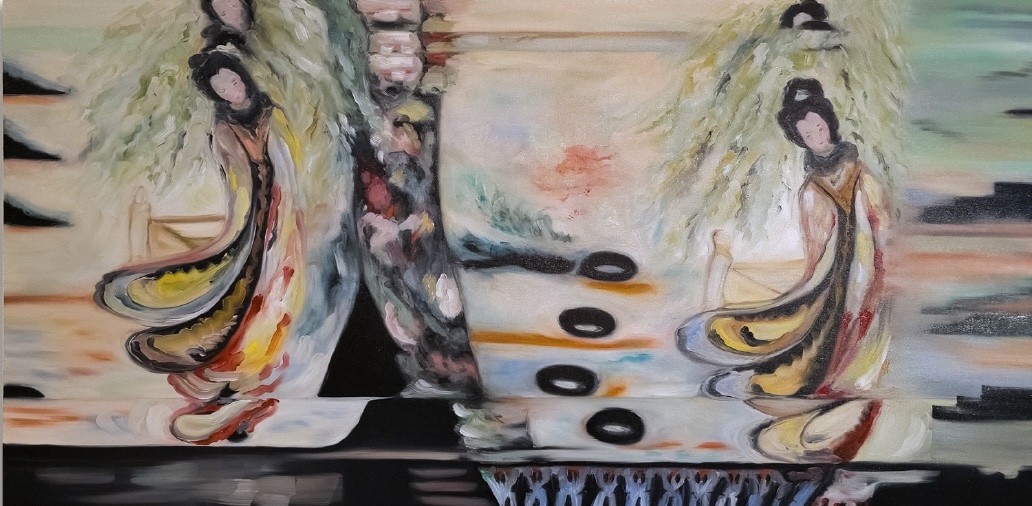
Tahanny Lee Betancourt
Nube alada, fulgor amarillo
Exhibition
-> Aug 28 2025 – Oct 10 2025
Daniela Elbahara presents Nube alada, fulgor amarillo by Tahanny Lee Betancourt. Curated by Lorena Peña Brito.
When the Qing dynasty collapsed and China was on the brink of chaos, my great-grandfather, Lee Cuan (later Juan Lee), left Canton with little more than the hope of a better life. He arrived in Mexico on the eve of its own revolution and survived one of the darkest episodes in our history: the massacre of the Chinese in Torreón in 1911. This story is intertwined with that of another exile, the Lebanese: my great-grandparents Catalina and Abdo, still children, crossed the sea to flee the Ottoman Empire and were taken in by relatives in the north of the country. I belong to the third generation after the exile. My story is many stories, transmitted in fragments that are not always anecdotal, manifested in nervous tics, in fears that sometimes seem inexplicable, in food, in family habits, in vague and disjointed stories. In my family, there is a tic in the right eye; my grandfather and two of my aunts blink very quickly involuntarily. My dad sometimes does it too when he is concentrating. What does it mean to become that repetition, the echo of the echo of the echo?
I learned to see in a house that they symbolically built to return us to a place of origin. An intimate setting with oriental décor, inhabited by lacquered wood, porcelain vases, tapestries, ivory carvings. A model of longing, reverie, and nostalgia. A story of what we never knew directly. That domestic atmosphere is what I inherited from exile. My grandparents set up a stage. Without material traces, we are left with the tics. The house became a setting that evokes an origin. Arranging, placing, choosing, and representing fragmented identity.
Nube alada, fulgor amarillo presents a new series of paintings that Tahanny Lee Betancourt has developed from the project “Las constelaciones cambiantes de las cosas,” a series that collects fragments and details of the objects that made up her paternal grandparents' house. Ornaments configured with the classic elements of Chinese decoration in images of Asian fauna and flora, female characters in traditional attire, with the color, brightness, and delicate patina of the main materials of Chinese folk art. In an exercise of memory and reflection on the exile experience, her paintings reconstruct the essence of these objects through repetition and vibration, a kind of commemoration of the false vestige, of the need to bring the past and the country of origin to what descends from exile, and of the domestic as a performative space.
–Daniela Elbahara